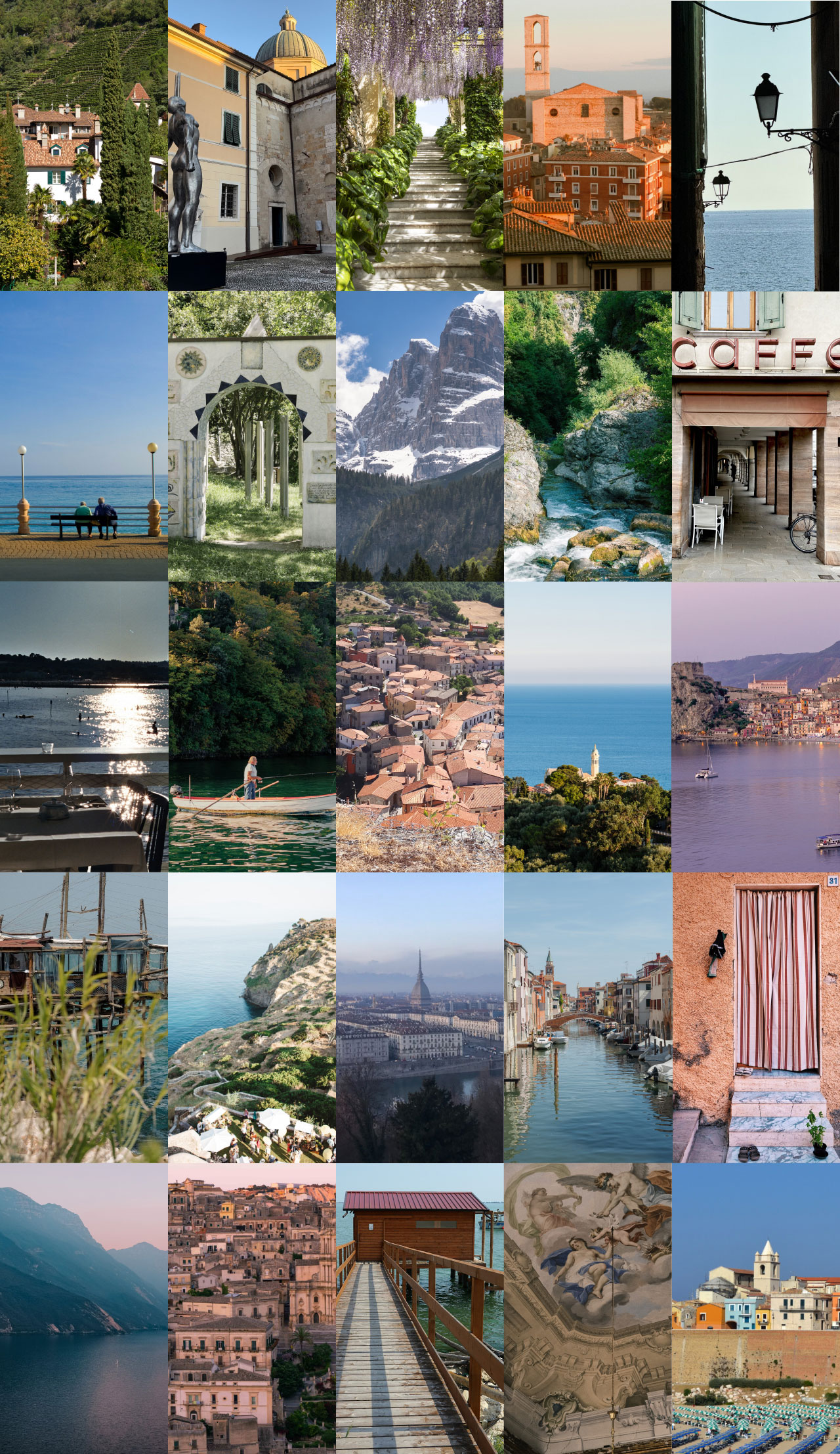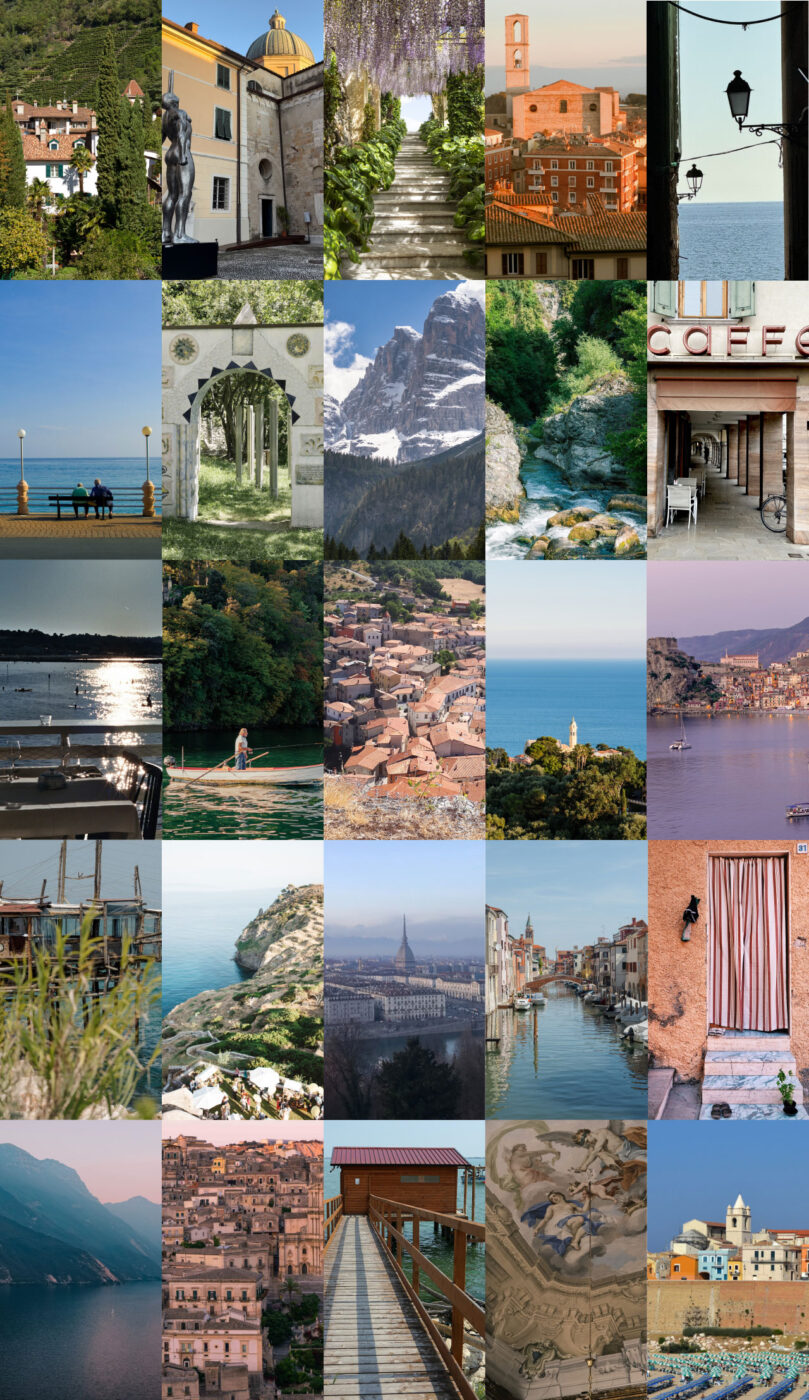If we hear of one more Italy itinerary that goes like–Venice, Florence, Rome, Amalfi Coast–we’re gonna scream. Not that these places aren’t great–there are certainly parts of them that we love, too–but there’s soooo much to discover in our country that it kind of makes our heads spin. We get that the beaten path is easier–especially considering Italy’s infrastructure problems–but those of you with a bit of gumption will be aptly rewarded for going off-piste. Ragazzi (Italians), this one’s for us too; for how much we love stessa spiaggia, stesso mare, change isn’t such a terrible thing.
These are the 25 underrated Italian travel destinations we think you should add to your 2025 bucket list, in no particular order, including lush river deltas and national parks, art lovers’ hotspots, and, of course, plenty of seaside villages.
If you’re looking for someone to do the heavy lifting for you, planning an Italy itinerary from A-Z, we’ve got you covered. Contact our Travel Team for fully personalized planning on the trip of your dreams.
1. Merano (Trentino-Alto Adige)
Nestled in an Alpine valley, Merano feels like a Wes Anderson dream: butter-yellow houses, a tranquil river, and cherry trees thriving in a unique microclimate that warms the Adige basin while snow still caps the surrounding peaks. This South Tyrolean gem has long inspired artists and writers like Franz Kafka and Ezra Pound, but it owes much of its fame to Empress Elisabeth of Austria (Sissi), whose daughter’s miraculous recovery at Trauttmansdorff Castle in the late 1800s cemented Merano’s reputation as a wellness retreat. While its proximity to five ski regions makes it a winter favorite, we think Merano shines in spring and summer, when wildflowers blanket the plains and the mountains transform into idyllic hiking trails.
The three-course breakfast at our favorite stay in the area, Ottmanngut, makes a visit to Merano worth it in-and-of-itself. This charming white manor house–surrounded by Mediterranean gardens with cypress, palm, and lemon trees–dates back to 1290, boasting a history as grand as the Dolomites that frame it. Check out our comprehensive guide to the city here, courtesy of Ottmanngut proprietor and Merano local Katharina Flöss.
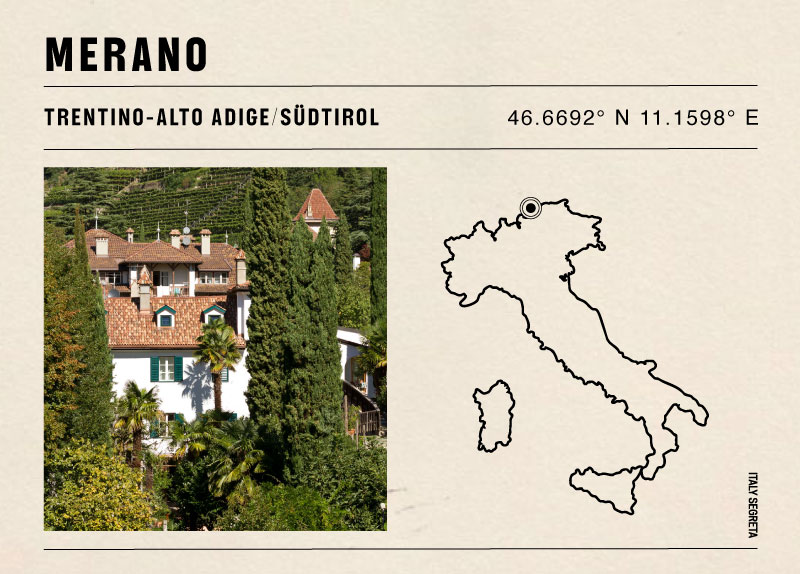
2. Pietrasanta (Tuscany)
Though we generally think the stretch of Tuscan coast known as Versilia is past its glory days–overpriced and with a sea that doesn’t come close to matching that of, say, Maremma–the town of Pietrasanta makes a notable exception. The charming borgo boasts one of the highest concentrations of exhibition spaces in Italy, with 40 galleries and ateliers, as well as 50 artistic workshops dedicated to the craft of marble and bronze processing. The magnetic artistic atmosphere has attracted renowned contemporary artists from around the globe, including Fernando Botero, Jeff Koons, Kan Yasuda, and Igor Mitoraj, who have created works here. A museum dedicated to the late Mitoraj–Polish-born sculptor celebrated for his fragmented yet monumental figures–is currently under construction. For more recommendations, check out our guide to Versilia here, courtesy of born-and-bred Viareggio local Rebecca Larsson.
Though not in Pietrasanta themselves, Villa Roma Imperiale and Locanda al Colle are two top-notch, family-run properties to stay at nearby.

3. Santa Margherita Ligure (Liguria)
Dubbed the Pearl of Tigullio after the gulf it graces, Santa Margherita Ligure fully earns its sparkling reputation. Nestled between the sea and the Ligurian hills, this colorful town often plays second fiddle to its glitzy neighbor Portofino, but, in our humble opinion, offers more activities, a wider dining scene (including one of the region’s best focaccias at Panificio Fiordiponti), and greater stretches of calm, swimmable beach—all without losing an ounce of charm. While Santa Margherita became an international destination post-WWII, it has long attracted colorful characters: pirates, wealthy Genoese seeking respite, and the European elite. Remnants of its rich history remain key attractions today: the 17th-century Villa Durazzo-Centurione, once a summer retreat for Genoa’s silk merchants; the Castello di Santa Margherita Ligure, built in 1550 and a reminder of the town’s fight against pirate raids; and the Abbey of San Fruttuoso, a 10th-century Benedictine monastery, which offers a secluded beach escape accessible only by boat or hiking trail. Nearby gems like Rapallo, Camogli, and, yes, Portofino are just a short trip away, making Santa Margherita an ideal, low-key base for Riviera exploration.
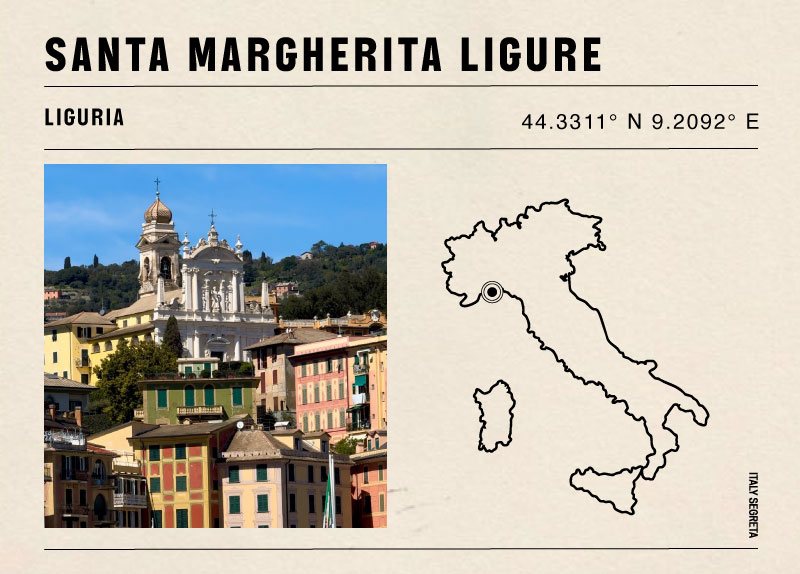
4. Taranto (Puglia)
Taranto isn’t the idyllic Puglia of postcards, but it’s a city on the rise, poised to become a creative hub for southern Italy, and we’re sure that 2025 will see lots of exciting things for the post-industrial city. For decades, its identity has been overshadowed by Ilva, once Europe’s largest steel mill, infamous for the whole host of environmental and public health crises it’s plagued the city with; the factory’s looming structures, in contrast with Taranto’s breathtaking sea views, create a striking tableau. But Taranto is succeeding in shaking off its gritty reputation; with a growing cultural scene, vibrant visual arts initiatives, and recognition as an Italian City of Art since 2019, it’s transforming into a dynamic and multifaceted destination for young travelers. The city’s rebranding is anchored by institutions like the Archaeological Museum, one of southern Italy’s most important, and a vibrant gallery scene, from Art House Auction, which highlights modern and contemporary art and functions as an auction house to GATA’s unique blend of contemporary art, residency, B&B, and bar. Dates for 2025 haven’t been announced yet, but keep your eyes peeled for eyeLAND, a festival by Phest in collaboration with the city, featuring street art, photography, music, poetry, and theater. With an ever-evolving roster of cultural initiatives, Taranto has earned its newest nickname: “the city of festivals.”

5. Isola di San Pietro (Sardinia)
Isola di San Pietro, part of Sardinia’s Sulcis Archipelago, is a rugged paradise known for its jagged cliffs that plunge into turquoise waters and unique Ligurian (yes, Ligurian!) heritage. The 50-square-km island is an absolute haven for nature lovers: serene beaches with epic snorkeling, nesting sites of the rare Eleonora’s Falcon, and salt flats with flamingoes that used to migrate here from Africa. The island’s sole town, Carloforte, was founded in the 18th century by Ligurian settlers from Tunisia, and their heritage is found alive and well in a Genoese-influenced dialect, architecture (you’ll also find “caruggi” here), and a cuisine that also features focaccia and pesto. On the topic of food, there’s nowhere you’ll eat better tuna than here. Isola di San Pietro lies along the migratory path of the coveted bluefin tuna, which pass through the Strait of Gibraltar before spawning in the serene waters around Sicily and Sardinia. Resting in the island’s waters for about two months, the tuna are in peak form–and you can taste it in the likes of tonno alla Carlofortina, fried tuna tail served with a vinegary tomato sauce.
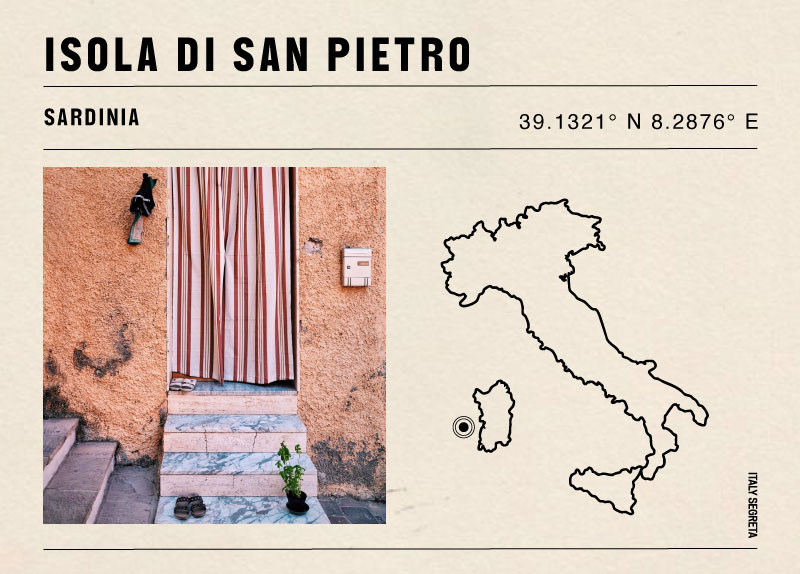
6. Santarcangelo di Romagna and Pennabilli (Emilia-Romagna)
We love most towns in Emilia-Romagna, and if we could recommend all of them, we would. But we’ll focus our energy here on two gems. The reason all comes down to Tonino Guerra, the renowned screenwriter who collaborated with some of the most iconic filmmakers of the 20th century, including Fellini, Visconti, Mastroianni, Tarkovsky, and Wim Wenders. His work in films like Amarcord (1973), a poignant portrayal of pre-industrial Italy that earned him and Fellini an Oscar, Nostalgia (1983) with Tarkovsky, and Beyond the Clouds (1995) alongside Mastroianni and Wenders, cemented his legacy in both Italian and international cinema. And yet, many don’t know that he was also a multidisciplinary artist. In Santarcangelo di Romagna and Pennabilli, two places where he lived, his art is littered like easter eggs. Guerra had a knack for designing fountains–like the whacky, spiraled Il Bosco della Pioggia and La Fontana della Chiocciola, a snail-shaped tribute to slow living–but his creativity truly shines in I Luoghi dell’Anima (Spaces of the Soul) in Pennabilli, an open-air museum of seven installations scattered across the village. Highlights include Il Giardino dei Frutti Dimenticati, an orchard of rare fruits adorned with sculptures, and La Strada delle Meridiane, a sundial-lined path through the historic center. You can also find his work at one of our favorite restaurants in all of Emilia-Romagna, La Sangiovesa, where you can find furnaces designed by him in every room–best admired over steaming bowls of regional heavy hitters like tortellini in brodo and tagliatelle al ragù.
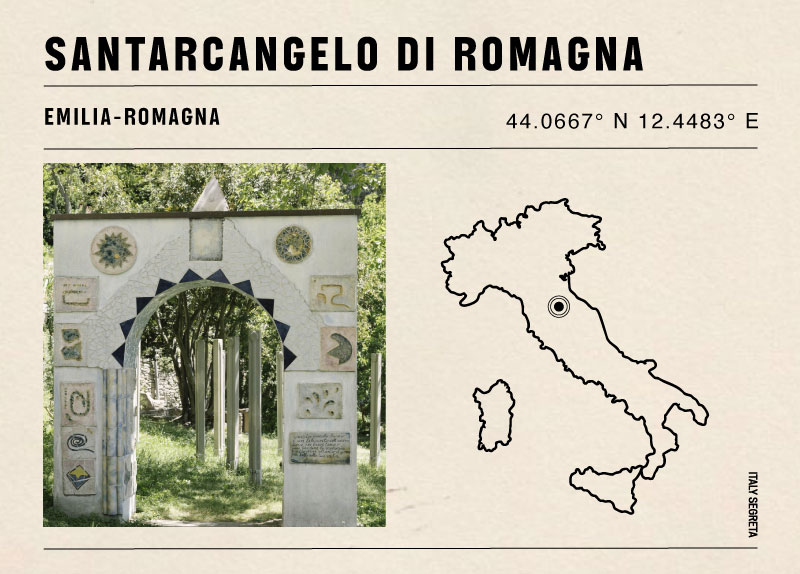
7. Bordighera (Liguria)
This town on the lesser-traveled western side of the Italian Riviera feels like a quieter, more authentic alternative to its flashier Ligurian neighbors (*cough cough* Cinque Terre). Historically a retreat for creatives and English aristocrats, Bordighera’s Belle Époque villas and British-Mediterranean gardens have been inspiration for the likes of Claude Monet, who painted the town’s ethereal light and lush scenery, and André Aciman, who based his novel Call Me By Your Name on the evocative town. While Bordighera’s historic core is a maze of stone alleys and piazzas, a stroll along Via Romana reveals grand villas such as Villa Garnier and Villa Mariani (Monet painted here). The Bicknell Museum, with botanical and archaeological collections, reflects the town’s English past, as does the Bordighera Lawn Tennis Club, Italy’s oldest. All this artiness doesn’t mean, however, that you can’t lounge seaside–as is wont to do in Liguria. The seaside promenade is the longest in Liguria, and the beaches are blissfully uncrowded. Check out our full guide, by Catherine Sabino, to the sophisticated, under-the-radar gem here.
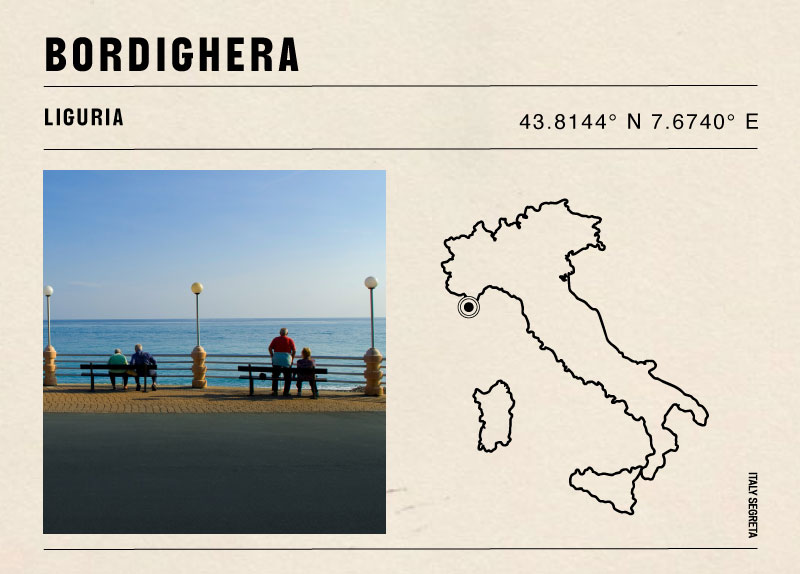
8. Scilla (Calabria)
This picturesque Calabrian village clings to the Tyrrhenian coastline where the rugged Aspromonte mountains (another destination on this list) meet the sea. Though it’s named after the mythical sea monster Scylla from Homer’s Odyssey, said to lurk in the narrow strait separating Calabria from Sicily, we argue that modern-day Scilla captivates with its beauty rather than fear. At the town’s heart lies Chianalea, a historic fishing district often called “the Little Venice of the South.” Narrow streets lead to houses perched at the water’s edge, where waves lap against stone foundations, and small fishing boats rest quietly in the harbor. The village is crowned by Castello Ruffo–a clifftop, 5th century BCE fortress offering breathtaking views of the Strait of Messina–and Scilla’s beaches, particularly Marina Grande, have exactly the type of crystal-clear waters and golden sands beloved by the easygoing beach type. This is exactly the type of low-key seaside town we love to have as a home base for a few days.
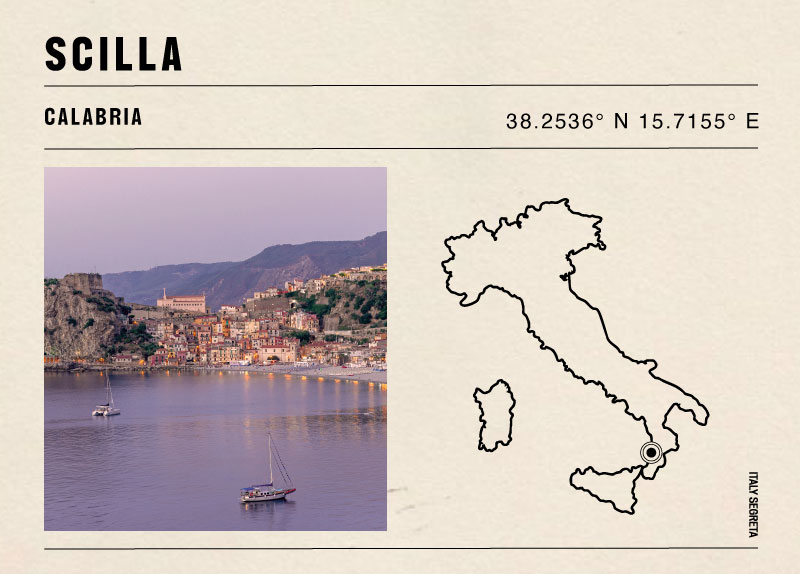
9. Turin (Piedmont)
We could wax poetic about Piedmont’s capital, but we’ll keep it brief here for all of your sakes. Turin is one of our absolute favorite Italian cities–and, dare we say, not only one of the most elegant, but secretly one of the hippest. Its grand boulevards and Baroque palaces nod to a royal past, but an industrial edge also comes from its 20th-century, Fiat-fueled modernity. Find this side at Parco Dora, a city park built from the relics of a Fiat factory that’s now a hotspot for skateboarders, or Parco d’Arte Vivente, another park in a former industrial area with rotating exhibitions of outdoor sculptures in the up-and-coming Lingotto neighborhood. In the city center, a warren of elegant arcaded streets hides everything from old-school cafes pouring velvety bicerin to the Museo Nazionale del Cinema in the skyline-making Mole Antonelliana. Here, you can sip vermouth in the city where it was born, scavenge for gems in flea markets (don’t miss the epic Balon on Saturdays or the even bigger Gran Balon, on the second Sunday of every month), and dine on agnolotti al plin and tajarin in the region’s top restaurants. Add all this to the fact that it’s a city that, unlike most in Italy, seems to actually function, with an efficient (although limited) metro system, well-paved streets, and trash-free piazzas.

10. Chioggia (Veneto)
Between marshlands and sea, Chioggia is built on a cluster of islands at the southern tip of the Venetian lagoon and, for centuries, has unfairly been overshadowed by its younger sibling’s commercial and cultural dominance. Recently, however, Chioggia has begun stepping into the spotlight, offering a quieter alternative to Venice’s sweaty, crowded streets. Highlighted as the top pick in The New York Times’ 2022 “52 Places to Visit” list for sustainable tourism, it’s gaining recognition for its charm and potential to ease Venice’s overtourism pressures. While the town didn’t win Italy’s 2024 Cultural Capital title (Pesaro claimed the honor), Chioggia’s colorful canals, quaint calli, and Venetian-style palazzi have earned it the nickname la piccola Venezia–Little Venice. A day trip from Venice is possible, but rushed; we recommend staying longer to really get to experience Chioggia’s rhythms. If biking is your thing, you can arrive via the E5 cycling path, which threads through the lagoon’s barrier islands before reaching Chioggia–a pretty epic, view-filled experience. Part coastal village (head to the nearby Sottomarina for sandy beach access), part vibrant city, Chioggia is one of our top picks for a relaxed 36-hour getaway; here’s the perfect itinerary, thanks to Venice local Valeria Necchio.

11. Molise (Molise)
Yes, we know this is an entire region, not a town or national park or island like the rest of the entries on this bucket list, but its teensy size (4,438 square km, or 1,713 square miles, making it Italy’s second smallest region after Valle D’Aosta) means that you can pretty much cover the region after a couple of days bopping around by car. Molise is so off-the-beaten-path that a running joke among Italians goes “Molise doesn’t exist.” We’re here to tell you that it does exist, and that it’s awesome. Molise’s wild beauty spans golden beaches in Termoli to rugged mountains dotted with medieval villages like Pietrabbondante, home to an impressive Samnite theater-temple, to a lake below Castel San Vincenzo so turquoise you’ll be rubbing your eyes in disbelief. Archaeology enthusiasts will revel in Saepinum, a remarkably preserved Roman town often called a mini Pompeii, and, come wintertime, the Santuario di Castelpetroso seems straight out of Elsa’s fairytale land in Frozen. Agnone is a must for the artisanal Marinelli Bell Foundry, which has crafted bells for the likes of the Vatican’s Saint Peter’s Basilica since 1339–or if you’re looking for top-notch, affordable kitchen copperware. And that’s not to mention the culinary canon, which includes truffles from Carovilli, handcrafted caciocavallo cheese, and la signora di Conca Casale, a pork sausage spiced with pepperoncini, fennel pollen, and peppercorns. This is a destination for those who value determination over convenience, but one that will well-reward the adventurous traveler.
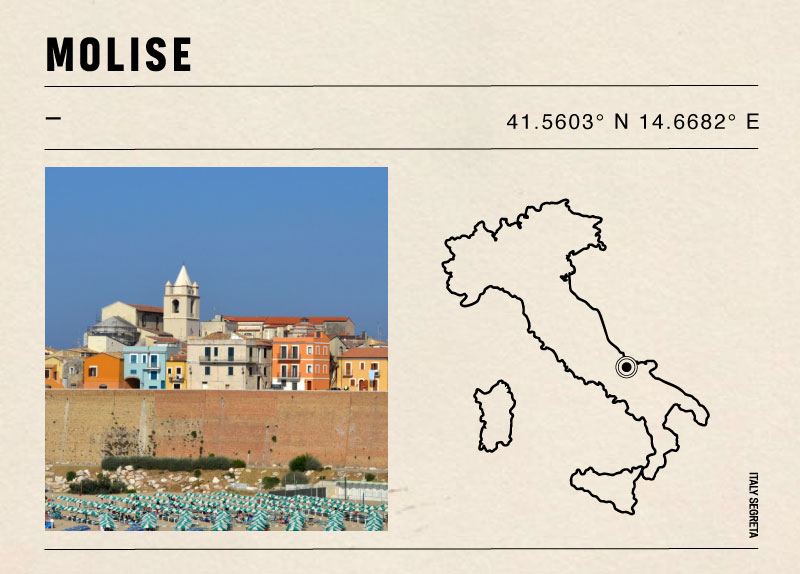
12. Val di Noto (Sicily)
This cluster of towns in Sicily’s southeastern heartland has earned UNESCO World Heritage status for its flamboyant, Baroque architecture–courtesy of the Spanish who ruled and rebuilt the area with local limestone after an earthquake flattened it in 1693. The Val di Noto is made up of eight towns–Noto, Modica, Ragusa, Scicli, Catania, Caltagirone, Palazzolo Acreide, and Militello in Val di Catania–but here’s the thing: we don’t recommend visiting the namesake one. The town of Noto was put on the (international) map after The White Lotus, but it’s frankly much more touristy and much less interesting than the others. You should instead concentrate your energies on the western part of the valley and the towns of Modica, Ragusa, and Scicli–with a few days in Catania, on the eastern coast, if you have the time. The architecture is obviously gorgeous, with ornate, pastel churches rising up from ravines and rocky impasses. In Modica, they make a one-of-a-kind chocolate that’s crunchy thanks to a cold-processing that doesn’t melt down the sugar (head to the historic Bonajuto to try it), while Ragusa is the realm of Michelin-starred chef Ciccio Sultano and Scicli that of TV’s Inspector Montalbano.Meanwhile, Catania, Sicily’s second biggest city, is a total cool kid’s spot: you can find our two-day itinerary here.
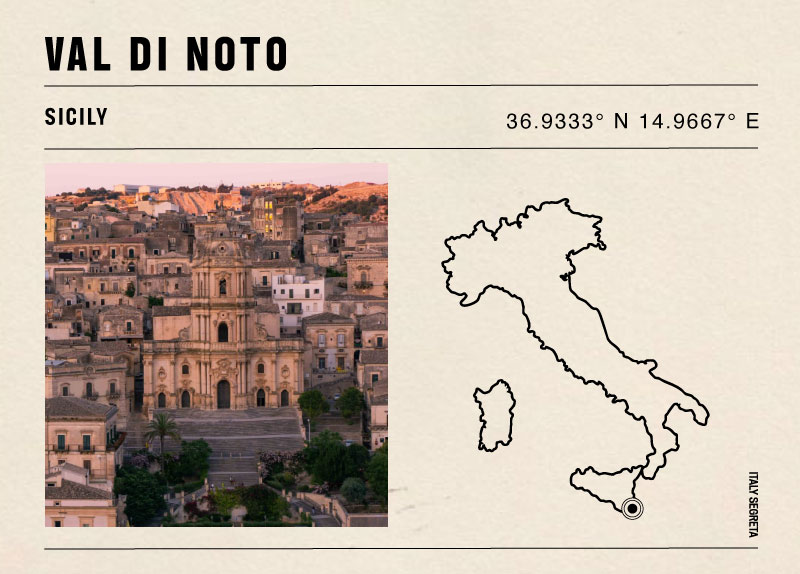
13. Madonna di Campiglio (Trentino-Alto Adige)
Madonna di Campiglio, in the heart of the Brenta Dolomites, is our tried-and-true winter escape–a serene paradise for skiers, with perfectly groomed slopes and a sophisticated atmosphere that somehow avoids the usual resort frenzy. Whether you’re carving through fresh powder, snowshoeing in silence, or catching the sunset from a cable car, views on views on views are guaranteed here. The runs are legendary, whether the historic Canalone Miramonti, the site of Italy’s first World Cup race in 1967, or the Centenary slope, inaugurated in 2011 to mark a hundred years of skiing in Campiglio. Tulot—one of the longest black diamond runs in the Dolomites—offers a thrilling descent, and if you’re in the mood for something different, Ursus Snowpark, one of Europe’s largest, is perfect for acrobatic jumps and freestyle fun. One of our favorite ways to explore the topography is by rifugi hopping. These rest stop-chalets are dining destinations in their own right, and there’s nothing like pulling off your skis and tromping into a cozy wooden restaurant, fireplace ablaze, for a hearty meal of canederli and other mountain classics; here are the 10 best. Though we do prefer the place for a ski vacay, the landscape doesn’t take a break even when the snow melts. On foot or by bike, you can find your pace among high-altitude lakes, through wildflower-strewn meadows, and along mountain paths that lead to dramatic vistas. The particularly intrepid should go for the historic Via Ferrata.
We always stay at the ski-in-ski-out lodge Chalet del Sogno, run by former Olympic skier Alberto Schiavon, who knows the area like no other and offers guided scenic hikes, mountain climbs, e-bike tours, canoeing trips, fishing expeditions, and horseback rides, weather permitting.
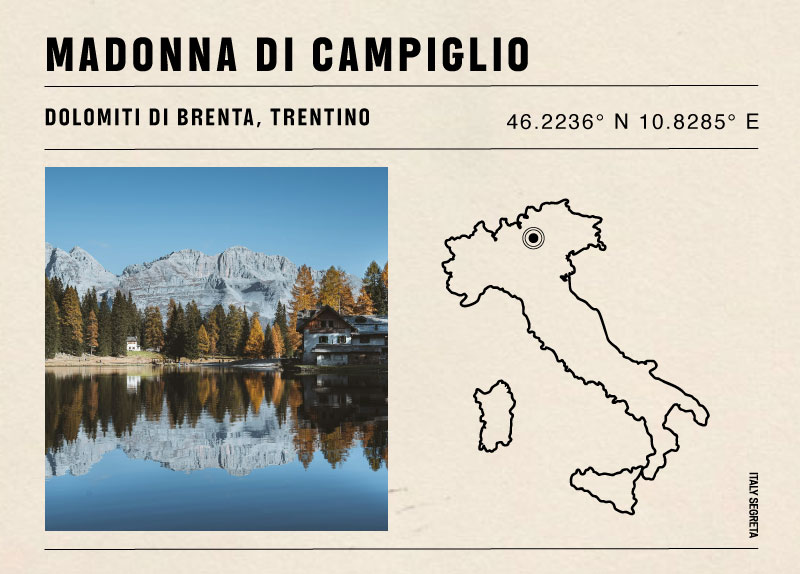
14. Lunigiana (Tuscany/Liguria)
This slice between Tuscany and Liguria has often been overlooked for the Renaissance beauty of the former and the candy-colored, seaside towns of the latter–but it’s well-worth checking out, even if on your way to or from the aforementioned. The region’s diverse terrain ranges from lush river valleys to rugged mountains, making it a haven for hikers and nature enthusiasts, and it’s often referred to as the “Land of a Hundred Castles,” thanks to numerous medieval fortresses, villages, and towers nestled amid the Apennine Mountains and the Apuan Alps. Two of the most stunning are the Fosdinovo Castle and the Castello del Piagnaro, now home to the Museum of the Statue Stele, which features mysterious sandstone statues that date back to between the 4th and 1st millennium BCE. But the real draw of the region? A peculiar, pancake-like pasta called testaroli that’s cooked on special cast-iron griddles and cut into triangles. For some top recs in Lunigiana and more on its distinctive primo, check out this piece by Italy Segreta contributors Lorenzo Villa, Tommaso Serra, and Bartolomeo Sala here.
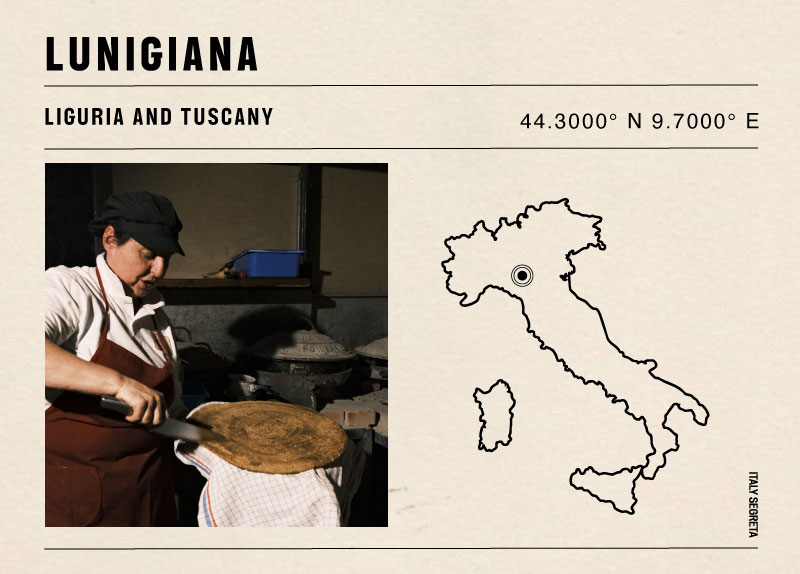
15. Costa dei Trabocchi (Abruzzo)
The Abruzzo coastline, stretching from the charming village of Ortona through San Vito Chietino and Fossacesia, all the way to the pristine Punta Aderci Natural Reserve, is anything but ordinary. There’s the grand Aragonese castle of the farmer and the peaceful grasslands of the latter, but the real stars are the namesake trabocchi—those quirky, ancient fishing structures that seem to defy the sea itself. (Read up on their history and significance here.) Today, visitors have the unique opportunity to dine on said structures, getting up close and personal with the Tim Burton-esque, stilt-supported things. Standouts include Ristorante Trabocco Punta Fornace and Ristorante Trabocco Pesce Palombo, where you can try traditional flavors of the region alongside seaside classics like spaghetti allo scoglio and fritto misto. Those wanting to dive into the culture of trabocchi should head to Trabocco Turchino, while sporty spices should check out the Via Verde. This 42-kilometer bike path, built along an old railway line, takes you along cliffs, golden beaches, and past the iconic trabocchi, offering stunning sea views at every turn. In 2023, the section from Ortona to Fossacesia even hosted the start of the Giro d’Italia.
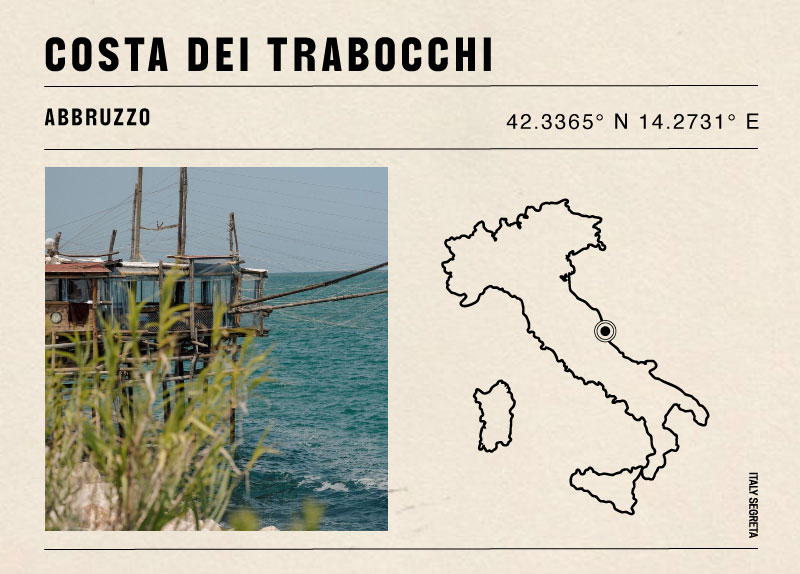
16. Fano (Marche)
This Marchigiano town is straight out of a 1970s dream, with striped umbrellas on pebbled shores from which you can watch fishermen’s boats returning to pastel-colored homes. But this town’s history goes way beyond the disco days. Roman ruins here stretch all the way back to 207 B.C.—you even have to walk through the Arco di Augusto, built in 2 A.D., to enter the walled centro. And no visit to Fano is truly complete without a stop at the Temple of Fortune, dedicated to the goddess of good luck. The local specialty is brodetto alla Fanese, a tomato-heavy broth brimming with the Adriatic’s finest seafood–a dish that originated on fishing boats as a humble meal made from catch too small or damaged to sell. Fishermen would toss the leftovers into a pan with oil, onion, tomato paste, and vinegar–shells and all–letting the flavors meld before serving it with stale bread to soak up the rich, savory broth; try it at the portside Trattoria La Quinta. For a more active experience, spend a few hours of hiking or kayaking in the nearby Gola del Furlo natural reserve, a 3,600-hectare area of woodland and canyons that feels straight out of Jumanji.
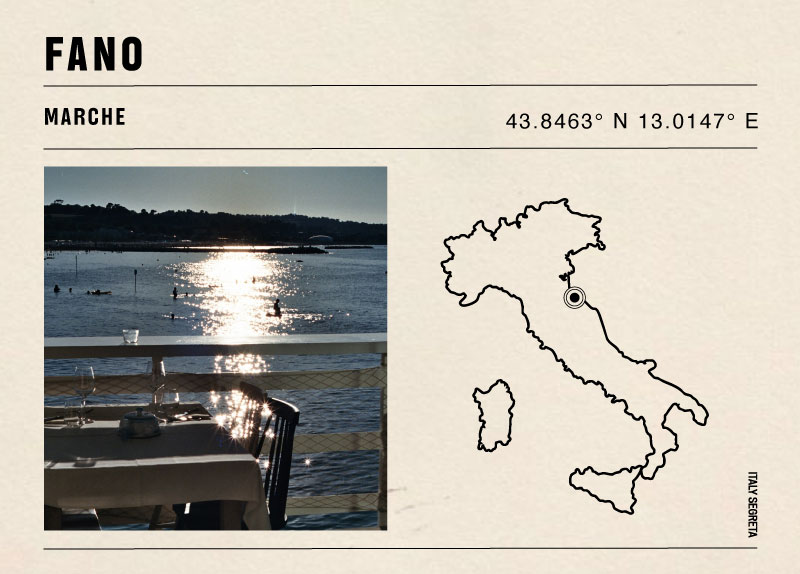
17. Aspromonte National Park (Calabria)
Aspromonte, whose name translates to “bitter mountain”, is a place whose rugged, steep landscapes have remained largely untouched by tourism, even from within Italy. But this mountain massif, rising nearly 2,000 meters, is as beautiful as it is tough. Since 1989, it has been a national park, home to dense fir forests, diverse wildlife, and some of the Mediterranean’s most important geological sites. Here, you can bounce between the Tyrrhenian and the Ionian Seas, all while passing through rare and wild natural beauty. Italians of the older generations will remember the region for the organized crime that plagued it in the mid- to late-20th century, but Aspromonte has bounced back better than ever. A visit to Aspromonte isn’t complete without a meal at Quafiz, run by the young Nino Rossi and set in an 18th-century farmhouse where a tasting menu and open kitchen showcase a refined take on Aspromonte-to-table cuisine. Chef Nino’s mission is to break free from the stereotype of Calabrian food as nothing more than fiery peppers and rustic fare, positioning the region as a true player on the national culinary map—and he’s succeeded. Earning a Michelin star in 2019, Quafiz is one of just seven Michelin-starred restaurants in Calabria, with all of the region’s starred chefs under 40. (Calabria is certainly a culinary destination on the rise!) In 2023, he opened ASPRO cocktail bar and Casa Quafiz, with four rooms for guests seeking an overnight stay–practical, given the isolation of the area.
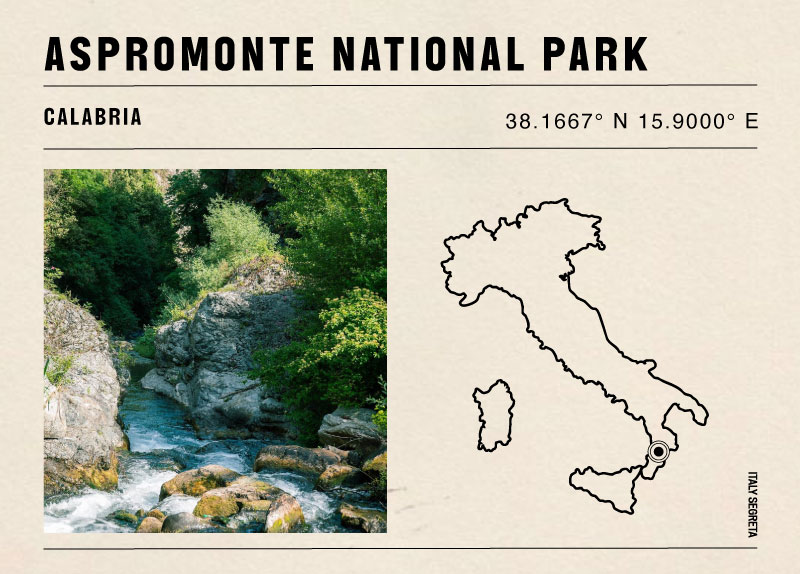
18. Udine (Friuli-Venezia Giulia)
This mid-size city–and the surrounding area–was one of our most pleasantly surprising trips of 2024. The town’s heart is Piazza della Libertà, where the Loggia del Lionello, a 15th-century Gothic masterpiece with intricate carvings and lion statues, speaks to Udine’s time under Venetian rule. From there, the city unfolds with palazzi showcasing Renaissance elegance and street corners peppered with some of the best insegne we’ve seen. It’s well worth renting a car for the wealth of landscapes and towns that surround the city. Head to Villa Manin for the elegant Baroque residence and lush parks that were once home to the last Doge of Venice, or to the town of San Daniele del Friuli, where you can sample endless quantities of the world-renowned prosciutto. History lovers will appreciate Palmanova’s star-shaped fort and Cividale del Friuli, a UNESCO World Heritage site featuring Lombard ruins and the iconic Devil’s Bridge.
Friuli is also one of our absolute favorite food regions (here’s a guide to the 20 foods you must eat here), and Udine has ample restaurant offerings to try them all–from frico, a melty cheese and potato pancake, to cjarsòns, sweet and salty ravioli filled with anything from ricotta to jams, herbs, fruits, and nuts and spiced with cinnamon, chocolate, and cloves. And wine? Don’t even get us started. This is a dreamland for those who opt for white or orange. We also recommend going beyond city limits to visit Friuli’s top wineries–just don’t forget to choose a designated driver.

19. Capraia (Tuscany)
We’re huge fans of all the Tuscan islands, and, as lips start to flap about Elba, we think Capraia is one of the best under-the-radar destinations for 2025. Capraia likely takes its name from the Greek word aegylon, meaning “island of goats,” or the Etruscan carpa, meaning “stone”—both feel fitting for the rugged nature of a place that requires a two and half-hour ferry ride to reach. It’s small, 19 km squared (this is about a third of the size of Manhattan), with 400 or so locals, few houses, and practically no cars, meaning it’s perfect for the nature lover who wants to go off-grid. Hike to Cala dello Zurletto for a most secluded swimming cove or take the “il Zenobito” trail at the northernmost tip of the island for jaw-dropping sea views and an abandoned 16th-century battlement tower. If you’ve got some budget to spare, the best way to visit the island is by gathering a group and staying at the five-star Forte San Giorgio, in a historic fortress that was once a Genoese stronghold and later a 70s disco. It’s now been lovingly restored to blend its rugged, ancient exterior with contemporary, airy interiors featuring local materials and eclectic furnishings. With 11 stylish suites and available for whole-property booking only, Forte San Giorgio is like the castle you always dreamed of having as a kid–private pool included. Book here.
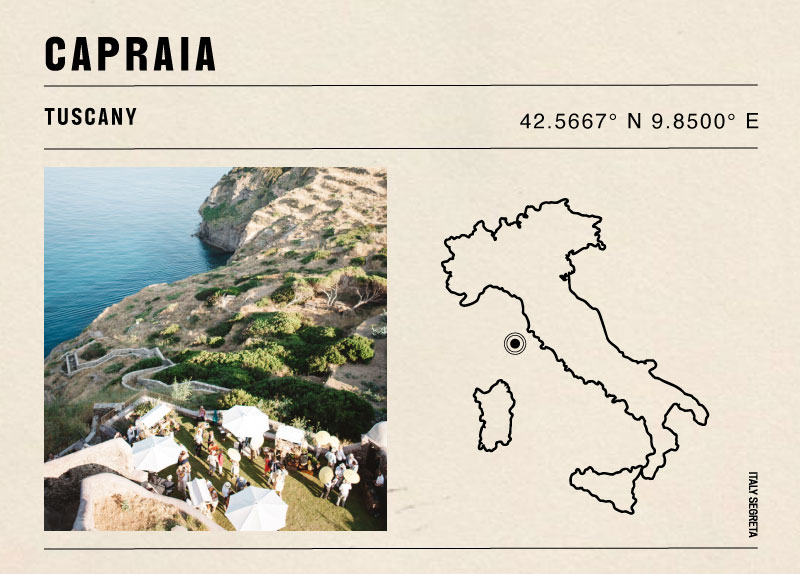
20. Parco Nazionale di Cilento (Campania)
Parco Nazionale del Cilento, Vallo di Diano e Alburni–a mouthful often simply shortened to the Cilento National Park–is a UNESCO World Heritage site in the southwestern part of Campania. And it’s like the Amalfi Coast–but also blissfully not, because here, locals actually still outnumber tourists. Pristine beaches–reachable only by boat or on foot–and dramatic sea caves really make this national park feel like a long lost paradise. It’s the type of place where you might stumble upon a shepherd’s path one moment and the ruins of a Greek temple the next. Don’t miss the turquoise waters of Baia degli Infreschi, the secluded sands of Baia del Buon Dormire, or the misty Cascate Capelli di Venere waterfall that trickles over moss-covered rocks. Cooling off at this spot, which is named after Venus’ hair, is sure to make you feel nymph-like.
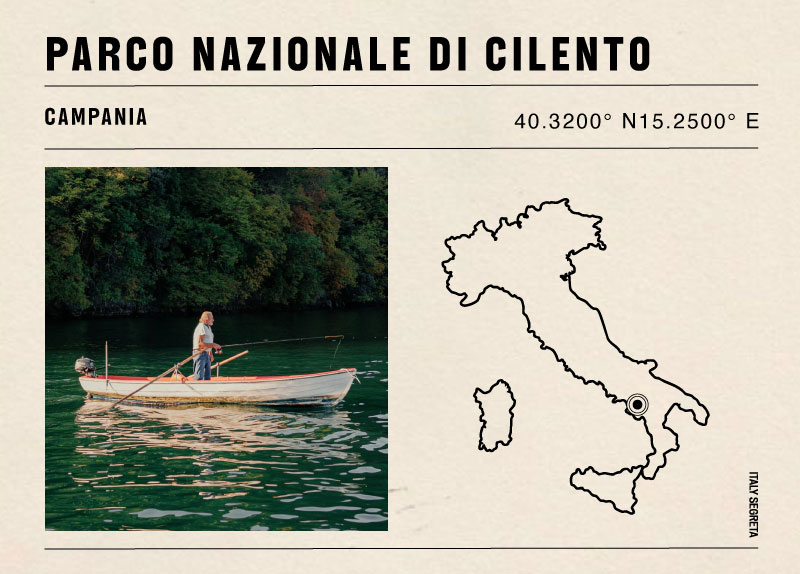
21. Delta del Po (Veneto)
Italy Segreta contributor Carlo Gibertini recommends the Delta del Po, and we heartily agree. This vast wetlands area where the Po river–the longest in Italy, starting from Piedmont’s Cottian Alps–meets the Adriatic Sea spans across the regions of Emilia-Romagna and Veneto, covering over 1,000 square kilometers. One of Europe’s most significant wetland ecosystems, the delta has been designated a UNESCO Biosphere Reserve for its exceptional biodiversity. Here, a maze of canals, lagoons, marshes, salt flats, and islands, all shaped by centuries of shifting river currents, serves as a critical stopover for migratory birds traveling between northern Europe and Africa, making it a birdwatchers’ heaven, particularly in the autumn and spring months. “You can bike around, spot pink flamingos, and see cavane—old wooden huts on stilts used by fishermen. You can also sleep in a lighthouse, Il Faro di Goro, if you like,” Carlo tells us. He also recommends Sacca degli Scardovari in Porto Tolle: “It’s famous for its amazing mussels, clams, and pink oysters, all with a stunning view.”

22. The Province of Imperia (Liguria)
Liguria is so much more than the sea–and y’all constantly seem to forget it. “Winter in the province of Imperia is the perfect time to forget about the sea for a while and focus on what’s happening inland,” Italy Segreta contributor Giulia Grimaldi recommends. Liguria’s hinterland is a treasure trove of olive groves, hilly vistas, and soul-stirring cuisine, and this slice of the region, which borders France, is chock-full of eclectic towns worthy of a visit. Giulia points to Bussana Vecchia, a Woodstock-esque hippie paradise of the 70s that still houses plenty of artists’ ateliers; Dolceacqua, a favorite of Monet, who painted it in several landscapes; and Apricale, is exactly what you imagine of fairytale, hilltop Liguria. Then there’s Triora, perhaps most famous for its role in the witch trials of the late 16th century. You can learn about this ~spooky chapter of the village’s history at the Museo delle Streghe (Witch Museum), which documents the trials and the folktales surrounding the region’s witches.

23. Sasso di Castalda (Basilicata)
Thrill seekers, listen up. In this tiny Basilicata town of just 745 inhabitants, you can cross a rock canyon on a wire bridge more than 300 meters long and 120 meters high, the Ponte alle Luna–a recommendation of Italy Segreta contributor Giulia Grimaldi. “It’s also an opportunity to look around and discover this wild and changing landscape that is Basilicata,” she says. “And afterwards? You can sleep in a treehouse or in glamping bubbles, gazing up at the stars.” The town itself is small, but nearby you can find the Parco Nazionale dell’Appennino Lucano, a vast national park with lush woods of beech, oak, and chestnut and wildlife that includes populations of wild boar, wolves, red deer, and the Marsican brown bear–a symbol of the park’s conservation efforts. This is also a great spot for you rock climbers.
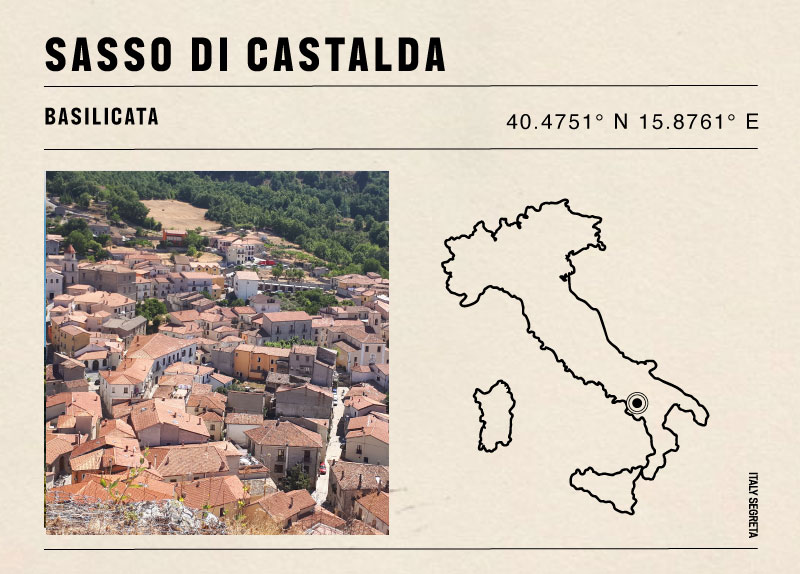
24. Lake Garda, the North End (Lombardy/Veneto/Trentino-Alto Adige)
Lago di Garda is a fantastic summertime alternative to the seaside–especially when you’re trying to escape the jellyfish glut we’ve seen in recent years. Italy’s largest lake, at 370 km squared, Garda lies in the shadow of the Alps and creates the natural border between Lombardy, Veneto, and Trentino-Alto Adige. With so much to do in and around the lake, we recommend bypassing the southern end and heading straight up north, where the water is fresher and clearer and misty mountains fringe the shores. Malcesine, Limone sul Garda, and Riva del Garda are all charming towns to use as a home base. Here, jump off cliffs into the cobalt waters, go kite- or wind-surfing, or just relax lakeside in a less hectic (and hot) setting than the seaside. That said, if you are on the southern side, don’t miss Jamaica Beach, a large, flat, and rocky plateau at the end of the thin Colombare peninsula that’s great for sunbathing and diving; or the practically floating town of Peschiera del Garda, made up of two small islands connected by a thin strip of land. Hikers and bikers can explore the 100-km Cammino del Bardolino, which winds through picturesque towns like Garda and Bardolino on the southeast shores, or take in the views along the Ciclo Pedonale Limone, a striking path that hugs the water’s edge in the north.
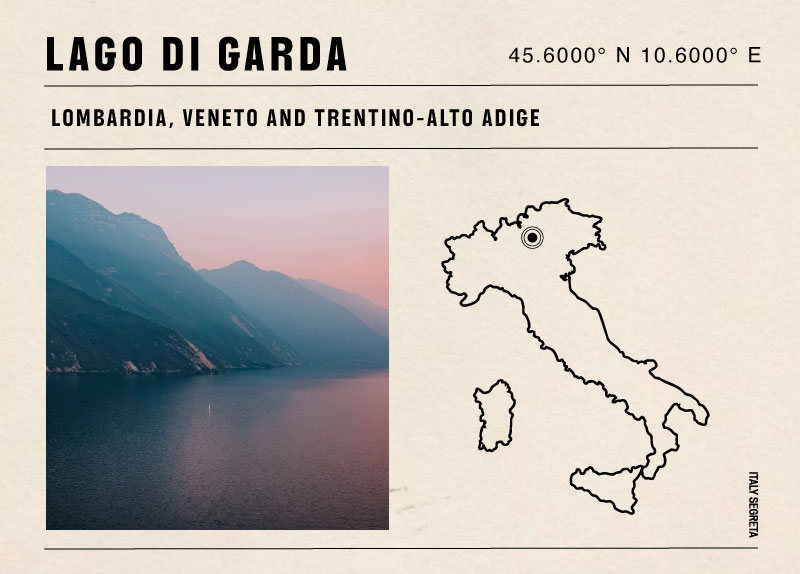
25. Perugia (Umbria)
Perugia, the capital of Umbria, is the Platonic ideal of a university town–small, perfect for a cozy weekend trip, and with options that straddle both ancient art and contemporary, student-led culture. By day, the city’s history unfolds in layers—from the grandeur of the Palazzo dei Priori to the underground world of Rocca Paolina—while at night, the veritably maze-like streets take on a mysterious quality and the piazzas pulse with aperitivo goers. (On the topic of aperitivo, we love Quasi 518, a teensy natural wine bar with a thoughtfully-sourced, short menu of things to eat.) Sweeping views of the surrounding countryside complete the picture and help you understand why Umbria is known as the “green heart” of Italy. Perugia is also synonymous with chocolate, with a confectionary history that gives it the title of la città del cioccolato. At the heart of this reputation is Perugina, the iconic chocolate brand founded in 1907 and known for their Baci, though you should go sample the wares of local chocolatiers and shops, who make the chocolate-hazelnut delight with artisanal production methods. A great time to go is in July, when the Umbria Jazz Festival gathers top musicians from across the world. Past performers have included Miles Davis, Charles Mingus, Quincy Jones, Sting, Lady Gaga with Tony Bennet, and Raye.

